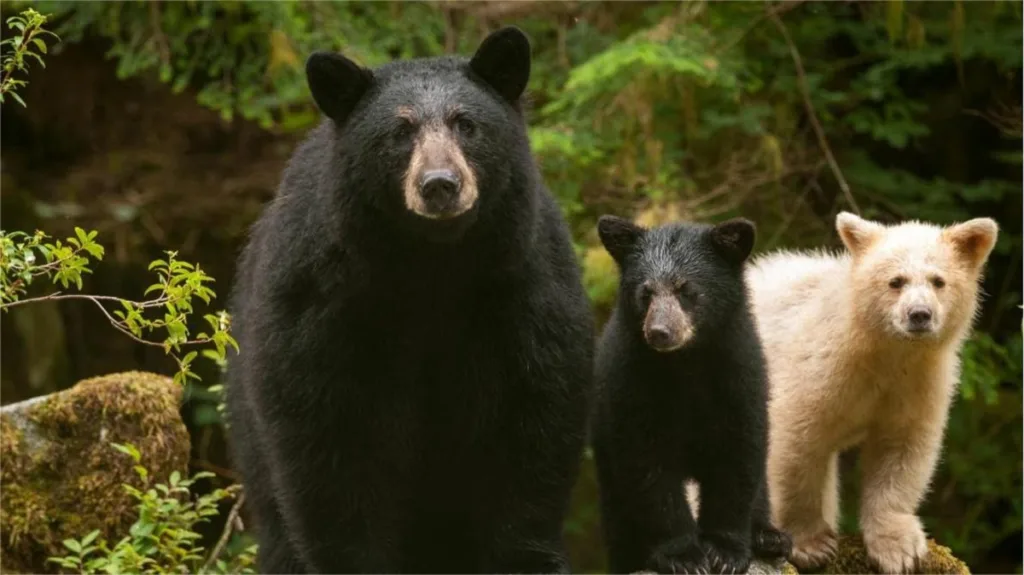Bears, classified under the family Ursidae in the order Carnivora, are a diverse group with eight extant species. Aside from the giant panda, the other bear species have their unique characteristics:
Spectacled Bear
Named for the black circles around its eyes that resemble spectacles, the spectacled bear, also known as the Andean bear, inhabits the Andes Mountains in South America. It is the only bear species found in the Southern Hemisphere and prefers fruits from the Bromeliad family, making it the least meat-eating bear aside from the giant panda.
Asian Black Bear
Native to Asia, the Asian black bear sports a “black fur coat” and a distinctive white patch on its chest that resembles the letter “V” or a crescent moon, leading to its alternate name, “moon bear.”
Sloth Bear
Found in Sri Lanka, India, Bhutan, and other parts of Asia, the sloth bear also features a V-shaped white patch on its chest. It has a longer snout compared to other bears, allowing it to feed on termites much like an anteater.
American Black Bear
Inhabiting North America, the American black bear is larger than the Asian black bear, with the largest individuals weighing up to 400 kilograms—double the weight of the largest Asian black bear. Unlike its Asian relative, the American black bear lacks the white fur on its face. Genetically, it is closer to the brown bear and polar bear than to the Asian black bear.
Malayan Sun Bear
Residing in Malaysia, Bangladesh, and the islands of Sumatra and Borneo, the Malayan sun bear is the smallest bear species, with adult males weighing no more than 80 kilograms. Its most distinctive feature is the U-shaped white or golden patch on its chest.
Brown Bear
Brown bears are found across Asia, Europe, and the Americas, making them the most widely distributed bear species in the world. They are robust animals with prominent muscular development on their shoulders. Brown bears vary greatly in size among subspecies; the smaller Syrian brown bear weighs just over 100 kilograms, while the largest Kodiak brown bear can exceed 700 kilograms. Among them, the North American brown bear is commonly known as the “grizzly bear” due to its grayish fur, and the Tibetan brown bear, also known as the “blue bear,” has a unique dark blue fur.
Polar Bear
Polar bears are the largest bears today, with some individuals weighing up to 800 kilograms. Although often referred to as “white bears,” their skin is actually black, as seen around their eyes, nose, inner ears, and the soles of their feet. Their white appearance is due to hollow hairs that reflect sunlight, creating a white appearance in the snowy environment. Unlike other bears that are omnivorous, polar bears are “strict carnivores,” primarily feeding on seals, beluga whales, narwhals, reindeer, and walruses. However, climate change has severely impacted their habitat and food supply, leading to instances of them scavenging for berries and bird eggs, and even cases of cannibalism.
Related Knowledge
Red Pandas and Giant Pandas: What’s the Connection?
The red panda, known for its reddish-brown fur and ringed tail, was once classified with giant pandas in the panda family. However, advances in research and molecular biology have revealed significant genetic and morphological differences. Red pandas are now classified in their own family, Ailuridae, while giant pandas belong to the bear family, Ursidae. The genetic similarity between red pandas and giant pandas is far less than that between humans and chimpanzees, as the latter two both belong to the primate family.
Closest Relatives of the Giant Panda
Among the bear family, the giant panda is closest to the spectacled bear. Genetic studies have shown that giant pandas diverged from a common ancestor among bears early on, with the spectacled bear being the next to evolve independently. Thus, the spectacled bear is more closely related to the giant panda than other bear species.




